12 Arabic Pronouns With Examples That Will Make Your Sentences Flow
Learning the structure of Arabic pronouns is very important because it is used in every day conversation. The more you master it, the closer you will be to learning Arabic. But first, we must understand the role of pronouns in the construction of Arabic grammar.
Advertisements
Personal pronouns (refer to the persons speaking, the persons spoken to, or the persons or things spoken about), indefinite pronouns, relative pronouns (connect parts of sentences), and reciprocal or reflexive pronouns (refer to the object of a verb being acted on by the verb’s subject) are examples of Arabic pronouns.
The pronouns in Arabic are the most complicated, since they have a masculine and feminine variants for the second person singular and plural, Also they have a dual variant denoting two persons.
How Many Pronouns In Arabic Language?
In Arabic language, there are twelve (12) personal pronouns. The setup of pronouns in Arabic is a little bit different than in English. The twelve pronouns in Arabic are:
- I أنا (ana)
- you (masc.) انتَ (anta)
- you (fem.) انتِ (anti)
- he هو (howwa)
- she هي (heyya)
- we نحن (naHnu)
- you أنتما (antuma)
- they هما (humaa)
- you (masc.) أنتم (antum)
- you (fem.) أنتن (antunna)
- they (masc.) هم (homa)
- they (fem.) هن (hunna)
In Arabic, we have singular, dual, and plural pronouns in first, second, and third person. The dual pronouns are used when there are only two people you’re talking about. If it’s three or more, you have to use plural Arabic pronouns.
Advertisements
Does Arabic Have Gender Pronouns?
Yes, Arabic have gender pronouns. Arabic assigns gender to all its pronouns aside from “we,” including its object pronouns, possessives pronouns, tenses and more.
What is a Pronoun Called in Arabic?
Pronoun is called الضَّمِيْر pronounced as Dhamir in Arabic language. The plural of Arabic pronoun is written as الضمائر and pronounced as dhama’ir.
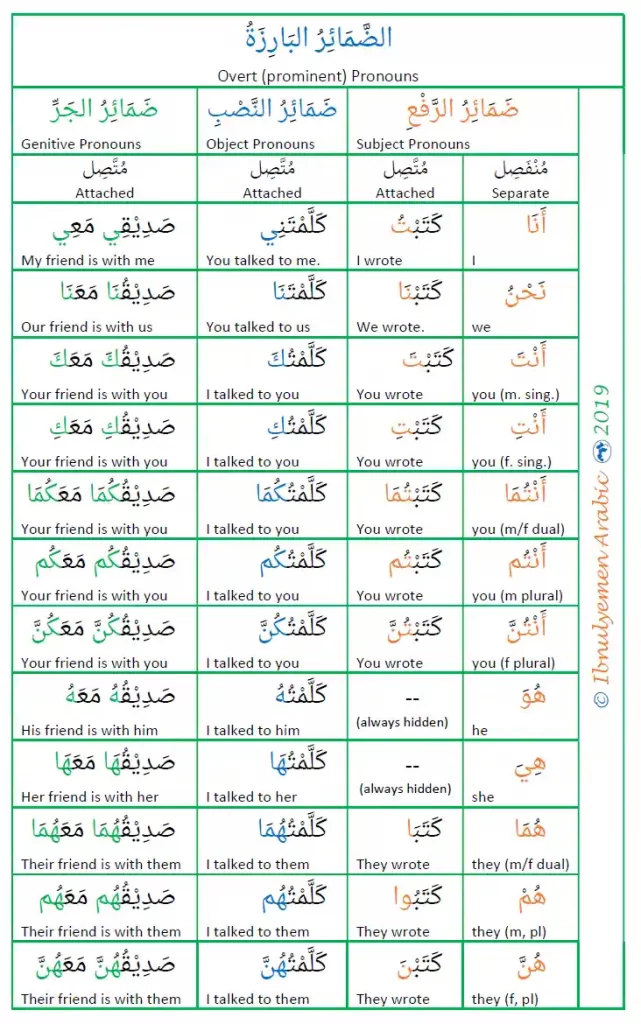
What is Pronoun In Arabic?
الضمير هو اسم جامد مبني وضع ليدل على : متكلم ، أو مخاطب ، أو غائب
Read 10 Arabic Question Words (Arabic Interrogatives) With Examples.
Subject Pronouns in Arabic
In Arabic, the subject pronoun is more specific than in many other languages; for example, there are different ways to say “you” in Arabic depending on who you’re addressing it to.
Advertisements
For example, to address two people, use a different subject pronoun than you would for a single person; also, if you’re addressing more than two people, use a different form. Finally, the majority of subject pronouns have both feminine and male forms.
The table below shows the various forms you may encounter:
| Arabic Pronouns | Transliteration | English |
| أنا | ana | I |
| انتَ | anta | you (masc.) |
| انتِ | anti | you (fem.) |
| هو | howwa | he |
| هي | heyya | she |
| Dual | ||
| نحن | naHnu | we (two persons) |
| أنتما | antuma | you (two persons) |
| هما | humaa | they (two people) |
| Plural | ||
| نحن | naHnu | we |
| أنتم | antum | you (masc.) |
| أنتن | antunna | you (fem.) |
| هم | homa | they (masc.) |
| هن | hunna | they (fem.) |
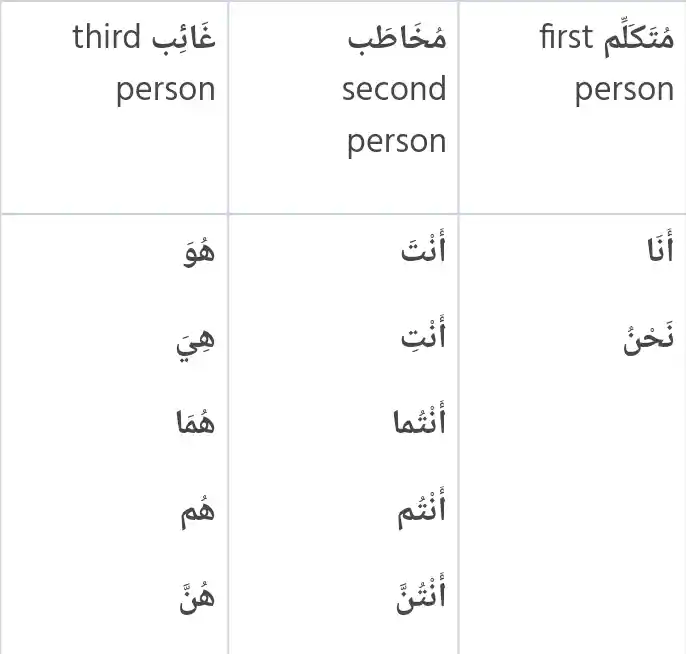
Examples Of Subject Pronouns In Arabic
| Arabic | English |
| أَنا أُستاذ | I am a (male) teacher. |
| انت لطيف | You’re kind. |
| أنا أتحدث العربية | I speak Arabic. |
| أَنتِ مُهَندِسَة | You (feminine) are an engineer. |
| أَنا أُستاذَة | I am a (female) teacher. |
| هنَّ في البيت | They (female) are in the house. |
| نحن في البيت | We are in the house. |
| أَنتَ مُهَندِس | You (masculine) are an engineer. |
| هِي مَصرِيَّة | She is Egyptian. |
| هُوَ ذَكِي | He is smart. |
| نَحنُ أصدِقَاء | We are friends. |
| هُمَا في البَيت | They (2) are in the house. |
| هو صديقي | He is my friend. |
Arabic Object Pronouns
When the sentence’s action directly impacts someone or something, you use object pronouns. These are terms like “me,” “you,” “us,” “he,” “her,” and “them” in English. Object pronouns, on the other hand, are suffixes in Arabic. This indicates that these pronouns are linked to the verb. In Arabic they’re as follows:
Advertisements
| Arabic | Transliteration | English |
| ـني | -ni | me |
| ـكَ | -ka | your (masc.) |
| ـكِ | -ki | your (fem.) |
| ـه | -hu | him |
| ـها | -ha | her |
| Dual | ||
| ـنا | -na | us (two people) |
| ـكما | -kuma | your (two people) |
| ـهما | -huma | them (two people) |
| Plural | ||
| ـنا | -na | us |
| ـكم | -kum | your (masc.) |
| ـكن | -kunna | your (fem.) |
| ـهم | -hum | them (masc.) |
| ـهن | -hunna | them (fem.) |
Examples Of Arabic Object Pronouns
| أُمّي تَشتاقُ إلَيّ عِندَما أَكون في المَدرَسَة | My mother misses me when I’m at school. |
| الأُستاذُ يُناديك | The teacher is calling you (masculine). |
| أَحمَد يَراه | Ahmed sees him. |
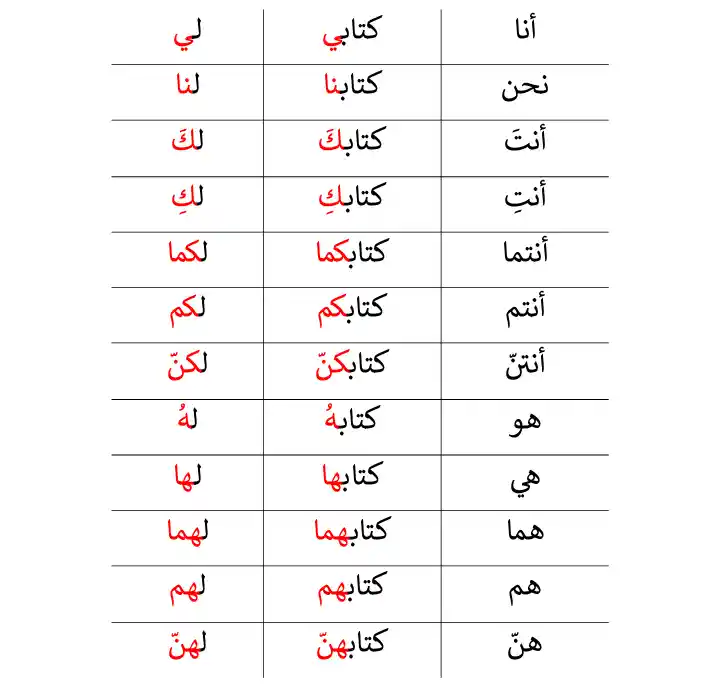
Related Demonstrative Pronouns in Arabic With Examples
Determinative Possessive Pronouns in Arabic
The determinative possessive pronouns resemble the Arabic object pronouns; the only difference is that they finish a noun rather than a verb, as mentioned above. So, to learn how to say “my house,” “his car,” and “her clothes,” see the chart below:
| Arabic | Transliteration | English |
| ـي | -i | me |
| ـكَ | -ka | your (masc.) |
| ـكِ | -ki | your (fem.) |
| ـه | -hu | him |
| ـها | -ha | her |
| Dual | ||
| ـنا | -na | us (two people) |
| ـكما | -kuma | your (two people) |
| ـهما | -huma | them (two people) |
| Plural | ||
| ـنا | -na | us |
| ـكم | -kum | your (masc.) |
| ـكن | -kunna | your (fem.) |
| ـهم | -hum | them (masc.) |
| ـهن | -hunna | them (fem.) |
- كلبي (klbi) – my dog
- كلبك (kalbak) – your dog
- كلبه (klbah) – his dog
- كلبها (kalabaha) – her dog
- My book Kitabi كتابي
- Your book kitabuk كتابك
- Your book (singular female) Kitabuki كتابك
- His book Kitabuh كتابه
- Her book Kitabuha كتابها
- Your book (dual male or female) Kitabukumaa كتابكما
- Their book (dual male or female) Kitabuhumaa كتابهما
- Our book Kitabuna كتابنا
- Your book (plural masculine) Kitabukum كتابكم
- Your book (plural feminine) Kitabukun كتابكن
- Their book (plural masculine) Kitabuhum كتابهم
- Their book (plural feminine) kitabuhun كتابهن
More Examples
| سائِقُهُم مُتَأَخِّر | Their (plural masculine) driver is late. |
| أَيْنَ سَيَّارَتُها؟ | Where is her car? |
| هَذِهِ حَقيبَةُ سَفَري | This is my suitcase. |
Types Of Arabic Grammar Pronouns
In Arabic, the pronoun can be overt or covert. The covert is known as مُسْتَتِر (mustatir), and it is not written nor pronounced. The overt is referred to as ظَاهِر (dhaahir), and it can be either separate مُنْفَصِل (Munfasl) or attached مُتَّصِل (muttasil).
The Separate Pronoun In Arabic
The separate pronoun refers to a person and is thus known as the personal pronoun. In Arabic, there are twelve personal pronouns divided into three categories: first person, second person, and third person, as summarised below:
Attached Pronouns In Arabic
Pronouns that are attached are always added at the end of the word. This word could be a verb, noun, or preposition. When added to a verb, it can function as a subject or an object. When attached to a noun, it becomes a possessive pronoun. When attached to a preposition, it operates as the object of the preposition.

Advertisements

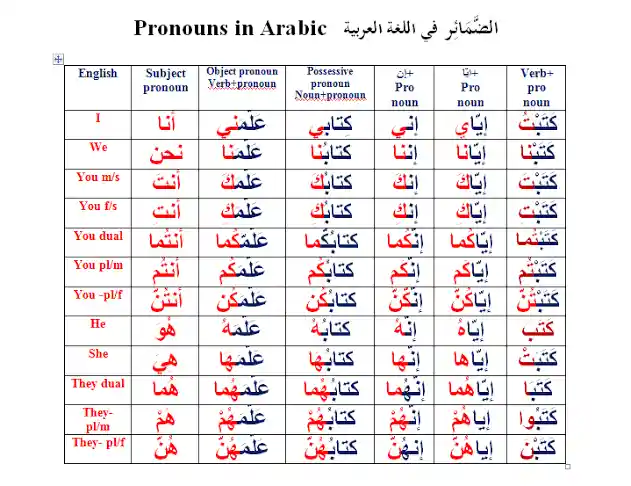
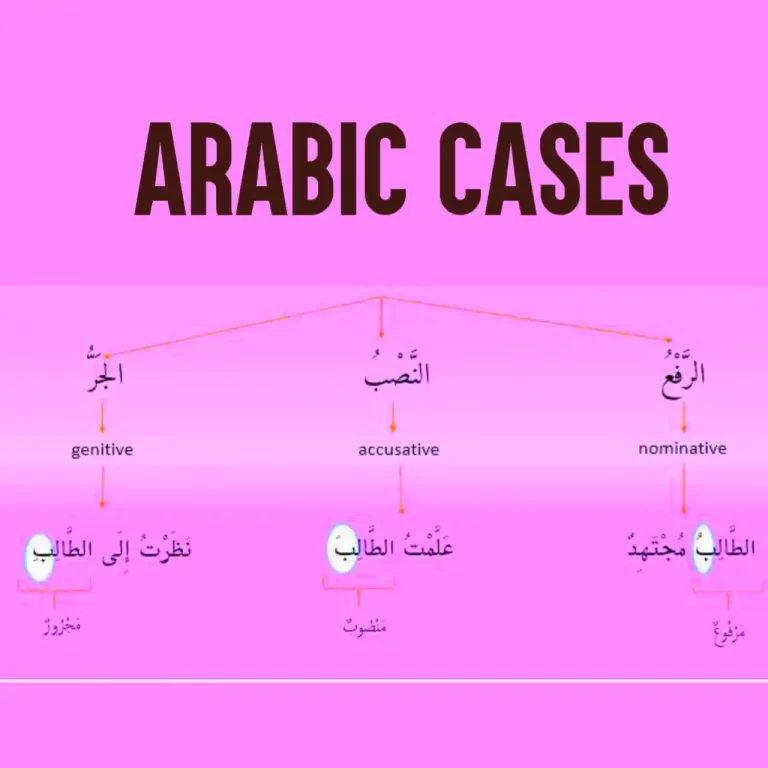
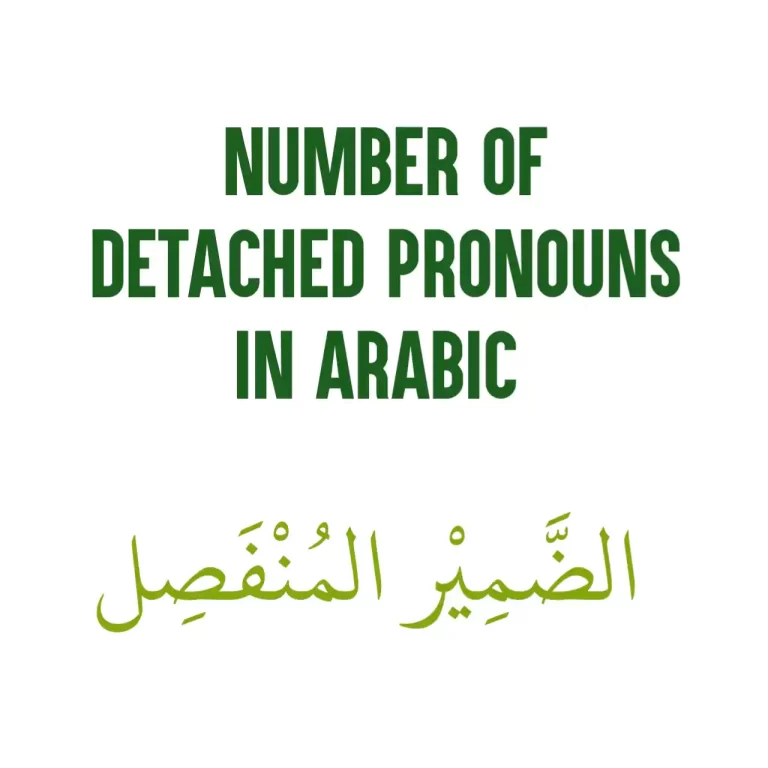
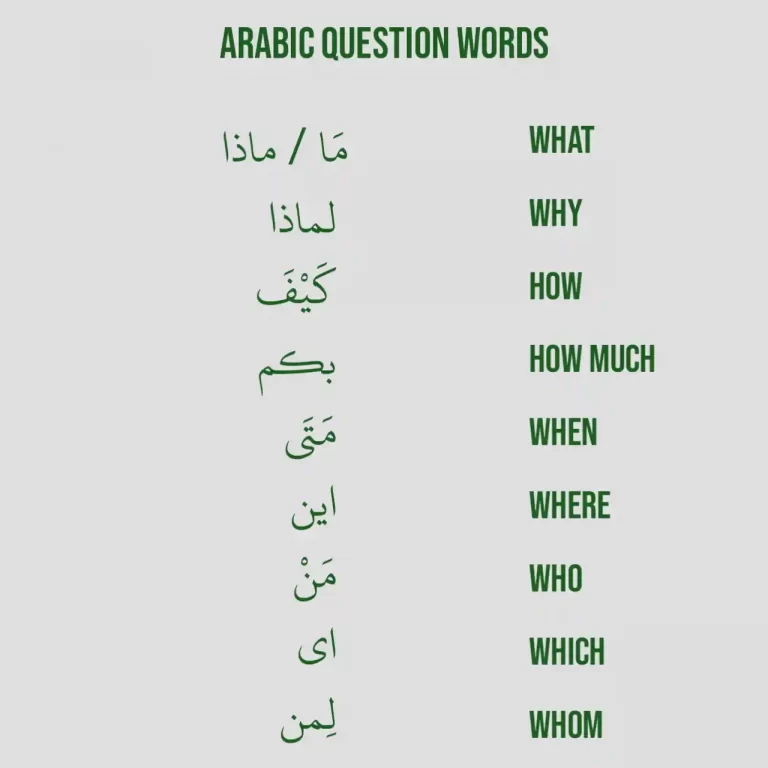
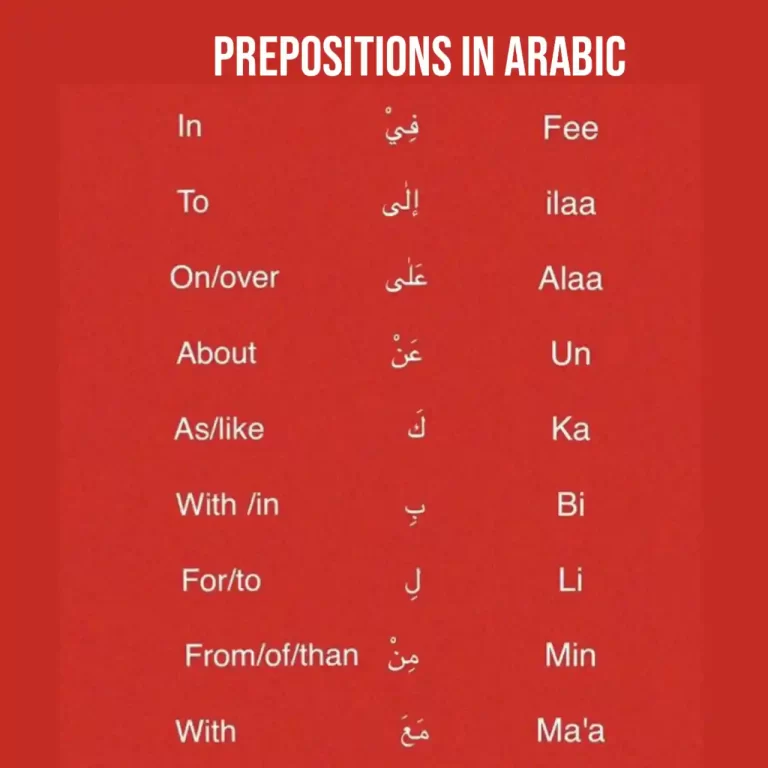

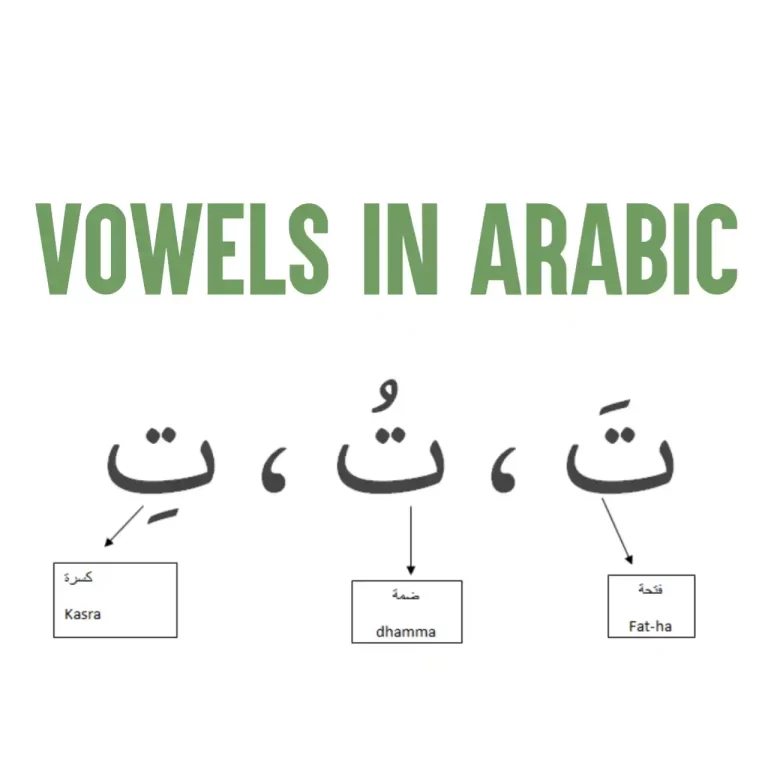
5 Comments